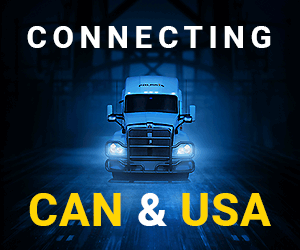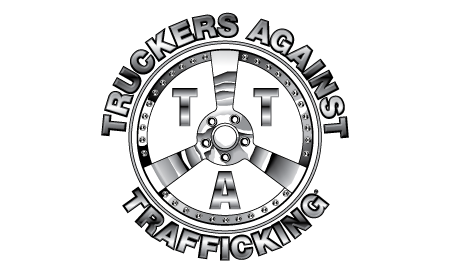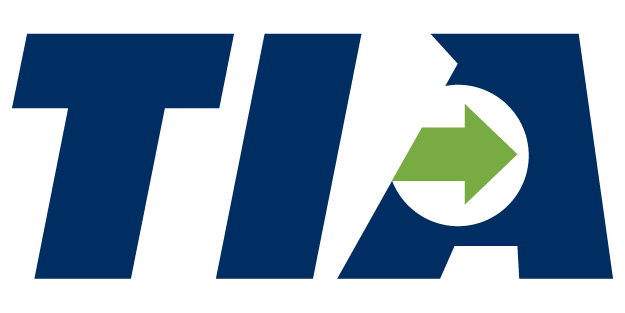POLITICS!
Wouldn’t touch it with a ten-foot pole: Usually economists, me included, shy away from writing and speaking on politics. There are many things that politicians deal with that have little to do with the economy but generate large passions, abortion, for instance. It is safest, therefore, for economists to stay away from such issues lest those passions detract from the calmer business of studying the economy. That choice is especially common among Austrian economists like me who believe strongly that the government’s influence over economic matters is profoundly over-rated.
Economists always have exceptions: There are, however, moments in political history when politicians have, or could have, a major impact on economic events. We are in such a time, given the out-spoken behavior of my college classmate, one Donald J. Trump, the President of the United States. Please don’t take this piece as an endorsement or critique. It is rather an analysis of the inherent effects of the governing style that President Trump has chosen. There are two aspects of his behavior, or policies, that are worthy of our attention: one is straightforward and generally beneficial to business, including trucking. The other is what he spends most of his energy on, the outrageous stuff. I tackle the boring side first.
A classic Republican? Whatever you make of our president, one must acknowledge that he is a brilliant promoter of the Trump brand. The experts laughed at him early in 2016; the networks panned him; the print media predicted a short life for the Trump campaign. But here he is the 45th President of the United States. There are two keys to his promotional success: The first is his mastery of the media. Who would’ve thought that Twitter was the road to the White House? The second key is his consistent regard for the most important needs of his political base. We all know about his focus on exported jobs and immigration fears, but just as important is his support for the classical conservative economic values of the Republican party. Formerly a relatively liberal Democrat, Trump has made the transition to a strong-on-defense, tax-cutting, deregulatory Republican. That last point is important to us in trucking because his administration has dramatically slowed the strong tide of new regulations flowing our way from the Obama years.
Deregulation – Yea!!!! We can thank his administration for the considerable softening of the new ELD rules. Note importantly that this policy cuts two ways. On the one hand, truckers benefit from the increased flexibility with which the rules are being enforced. That is allowing truckers to get their needed rest in patterns better adapted to the realities of the open road rather than a single, hard-and-fast pattern cooked up in Washington. On the other hand, the improved productivity from the rules changes has helped to soften the tightness in the market, contributing to the dramatic falls in spot rates over the last twelve months.
This knife cuts both ways. Many truckers think that tight regulation robs them of the ability to make money. More loaded miles, after all, lead to more money in the bank. If, however, every trucker runs hard, they end up creating a surplus of capacity that lowers rates. More loaded miles does not equal more money in the bank. Only in the case where a minority of drivers run more miles, either because they cheat more than anybody else, or are just better at getting loaded, does more miles equal more money in the bank. In the same way, regulations that apply to everybody’s lower productivity, restrict the supply of trucks. Voila! Markets work, and prices go up. The shippers pay more, and the carriers put the same amount of money in the bank. Sometimes, when the regulatory change is dramatic, there is an adjustment period where capacity is really tight, and truckers prosper. Look at the accompanying chart of trucking rates going back to 2000. Since that date, we have had two big changes in HOS, one in 2004 and one in late 2013. Then there was the ELD mandate late in 2017. In each case, prices responded dramatically, for a while anyway, until a bunch of new capacity came in. Here’s the point. Regulation is not inherently bad, especially safety regulation. It can be good. It helps protect other truckers and the public from the idiots who want to run ninety hours in a week.
So when regulatory issues come up, it is the TIA’s job to make sure that the regulations are efficient and fair to the various parties involved. Keep in mind importantly that the costs of regulation ultimately fall on the shippers. As long as the regulations fall on everyone, brokers and carriers add the costs to their rates. The challenge is understanding what those costs are and adjusting one’s prices in a timely manner. As regulations change, you would be wise to spend most of your time figuring out how to adjust to it, rather than moaning about more interference from Washington. Let the TIA’s Washington people deal with the regulators. Consider, for instance, the recent ELD mandate. They were required for safety reasons but are becoming an essential tool in managing trucking productivity. This means the prime challenge of that regulatory change for brokers is to get a hold of the data from the ELD’s and learn to use it to make pricing and matching tasks more efficient. The asset guys are already doing that.
Now for the big stuff: As American politicians have been steadily failing to deliver on their campaign promises the voters have been increasingly looking for new faces, people who will govern differently. Arnold Schwarzenegger is a great example, the tough guy that Californians elected as their governor. Clearly, Donald Trump was elected for the same reason. Importantly, he is the first of such outsiders to attempt to govern in a new way. The others, Arnold included, eventually played by the old, tiresome rules. But Donald, isn’t polite, doesn’t use politically-correct speech, doesn’t play by those old rules. Who else would treat the Russians with more courtesy than our traditional NATO allies? The good side of such behavior is its shock value. Maybe President Trump will cut through some of the problems that have remained unsolved for many years, like our big trade deficit, or the mess in North Korea. So far, the economic evidence of his tenure is good. We are riding the wave of an unusual late-recovery mini-boom. Maybe it will continue. I’ll comment on that probability next month.
Ah oh! Maybe he will do what he says he will: I am writing about my classmate this month because of two downsides to his radical approach to governance. Mr. Trump is a man of action. He does stuff! And he does stuff that appeals to his base. Those Trump signs that sprung up in small towns across America are still there. With an election just sixteen months away, you can be sure that he will continue to do stuff that appeals to his base. But there are four risks to his behavior, risks that we all need to factor into our planning for the rest of 2019 and all of 2020.
Ready, fire, aim! The first risk is his impulsiveness and impatience. His supporters love it, but experts decry the lack of careful forethought. Certainly, his style generates additional and more timely alternatives than the usual committee approach in Washington. It also confuses people. The unexpected and unexplained does that. To business people in trucking, this tendency shows up as increased risk. Some of that is on the upside. Maybe he will get China to play more fairly. Most of the risk, though, is on the downside. His approach increases the possibility of BAD policy.
Watch out for the fall out: The second risk is the economic implications of his dramatic attacks on non-economic political matters. Two examples come to mind. Reducing illegal immigration on our southern border may be a great social policy for his base. Still, that policy also is devilishly difficult to execute, given the tight integration of the American and Mexican economies. Also, our labor-short economy is dependent on illegal immigrants to clean our hotel rooms, cut our grass, and pick our strawberries. Policies that either restrict the legal movement of goods across our southern border or the illegal entrance of low-wage workers would significantly threaten the economic growth of an American recovery that is getting long on the tooth as it is. The second example is his policy regarding Iran and to a lesser extent, Venezuela. Embargos on their oil have already contributed to the $10 increase in crude spot prices since the New Year. Hasn’t shown up at the diesel pump yet. It will.
The Trump Tax Increase: The third risk is a directly economic one, his expanding trade war with China and the recent threat of tariffs on Mexican goods. If you believe in classical economic policy ideas, a tax cut stimulates the economy. That’s why Congress passed that tax cut last year. Sure enough, the economy boomed. The opposite must hold as well: taxes up, growth down. Tariffs on Chinese or Mexican goods are a tax. The President is already bragging about the revenue the first round of tariffs on China has produced. China and Mexico are our largest and third largest trade partners, countries we depend on for goods. Mr. Trump’s tariffs on those goods are a significant tax increase on the U.S. economy. Now, importers are clever people who will figure ways to get around those tariffs by buying somewhere else or through other less obvious means. Yet, the combination of the new taxes and the losses in American exports that come from trade wars will hurt our economy.
Stay cool everyone! The fourth risk is the big one and applies to all of his agendas the President’s negotiating tactics are based on shock and bravado. He also says stuff that has no meaning saved for his message of solidarity with his base. His demand that Mexico pay for a border wall comes to mind. In a world where delicate compromise is often the required outcome, such brash tactics may prevent progress on otherwise solvable problems. His refusal to negotiate with the Democrats over infrastructure spending is a good example. What’s worse, while such outrageous tactics play well to his base, they may cause a dangerous emotional response across the negotiating table. A shooting war with Iran, something now possible, would restrict oil flow from the Persian Gulf. How about $150 barrel of oil again? In the same way, China has the power to win a financial war with the U.S. should it get angry enough over the trade war.
You get what you pay for: Here’s the point of all this. Donald Trump is a high-risk President. His willingness to challenge the sacred cows of Washington and Diplomacy are long overdue and carry an upside. Certainly, his adherence to classic conservative economic principals has helped fund the nice end to this recovery. Maybe he will force some progress in our trade relations with China or begin the first meaningful debate on immigration. That’s the upside. Unfortunately, at least in the short run, the downside risks are bigger. So far, he has backed off from his most outrageous positions, using instead his mastery of the media to declare victory. However, the danger remains that the other side will take his threats seriously or just get angry and do something stupid.
Watch out! Here are three scenarios that you need to be watching for. I will follow them for you too.
- Economic drag: If China and Mexico tariffs go into effect, it could mean up to a .5% drop in GDP. Enough to kick off a recession. Probably not, but the drag could combine with other downside risks. I am pessimistic about next year anyway.
- Shots fired in the Persian Gulf: Although an all-out war with Iran is unlikely, the oil markets would certainly react strongly too in a shooting incident, or combination of incidents. Hundred-dollar oil would result – that would mean global recession.
- Financial war with China: Given the current imbalance of trade with China, a trade war hurts them more than the U.S. It could hurt them enough to cause retaliation in financial markets, either the dumping of their hoard of American Treasury bonds or an attack on the dollar. Either would provide an economic shock at least as big as the banking failures of 2008.
My glass is half empty right now: Next month I will be presenting to you my forecast for the remainder of 2019 and all of 2020. You will see that I fall on the pessimistic side of that process. While I will detail my full rationale for that position, this month’s commentary details an important element of that rationale. We have, for better or worse, a president of the unexpected. Decision-makers of all types are uncomfortable with the unexpected. It makes sense to take a prudent, conservative stance when one considers the economic uncertainties that follow from Donald Trump’s leadership.













